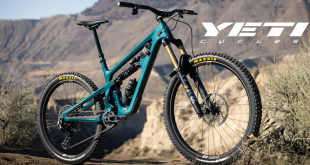Rebecca Morley examines the UK mountain bike market and what’s behind the rise in popularity
With the global increases we’ve seen in cycling across the globe over the past 18 months, one area that has also grown in popularity is mountain biking. According to Market Research Future (MRFR), the outlook appears ‘quite promising’ with the increasing cross-country competitions worldwide, with the MTB market expected to grow at approximately 10% CAGR from 2020 to 2027. Adventure tourism is the fastest-growing tourism industry worldwide, and several countries are focusing on new mountain bike strategies aiming for an economic boost.
According to the latest research from Mintel on the UK cycling market, which found that bike volume sales rose an estimated 22% in 2020, MTBs remain the most popular type of adult bicycle, with one in three cyclists (33%) currently owning one. The popularity of mountain bikes and hybrids reflects the type of ‘new customer’ created by the pandemic, says John Worthington, senior analyst at Mintel – mainstream leisure cyclists, rather than the cycling ‘hardcore’.

“Recently, we have seen a significant influx of off-road riders at all levels,” says Georgia Leslie, category lead – mountain, Specialized. “People are rediscovering routes from home for a variety of different reasons, be it just getting off the road, the ability to escape and explore, adventure or would you believe, just for fun.
“Along these same lines, the bikes themselves have become increasingly more capable over the past few years, with shorter travel bikes becoming hugely popular in more recent times, with the handling being more capable.
“On the other hand, on platforms with slightly more travel, the Mullet set-up is definitely a trend that has become more widely received and can now be found on many more models from different brands.
“I think we can all agree the popularity of e-MTBs has increased significantly in recent years, with a huge portion of the mountain bike market now focused on this segment. This trend is certainly here to stay and is only going to grow even further, especially with lightweight systems bridging the gap between analogue and full powered e-bikes. At the end of the day, mountain biking is all about fun and adventure and e-bikes make that more accessible.”
The global e-mountain bike market was valued at around $5 billion in 2020, and it is expected to reach over $10 billion by 2026, projecting a CAGR of more than 12%, according to Research And Markets; and the e-MTB market is led by Europe and followed by North America and Asia-Pacific. According to the German Bike Industry Association (ZIV), a record 585,000 e-mountain bikes were sold in Germany last year. By comparison, 151,000 mountain bikes without motors were sold in the same period. As such, mountain bikes and cargo bikes are reportedly the only categories in the bike market that are selling more bikes with an electric drive system than without.
Almost every third e-bike sold in Germany is an e-mountain bike, according to Eurobike. This makes them the second biggest product category in the e-bike segment, after trekking bikes. Despite the fact that there are no 2021 market figures yet, bike retailers have reportedly indicated that there is a clear upward trend in the e-MTB market. The factors behind this include the bike market boom due to COVID-19 and also new technical developments in e-mountain bikes that have won over traditional bike fans to the product segment.
Increasing interest
The UK mountain bike market is in great health and is probably growing at a faster rate than at any time since the late 80s/early 90s, says Darren Mabbott, managing director, Silverfish UK. “Whilst the recent increased interest in cycling linked to COVID-19 and lockdowns has benefited mountain biking, at Silverfish we’ve been aware of increased interest for much longer.
“We have seen retailers, many of whom started out with us on the journey way back in 1999, grow through their unwavering commitment and passion for mountain biking. In the last decade, savvy bike retailers, some of whom entered the market on the back of the road bike boom, have recognised that their customers are increasingly interested in mountain biking and have seen it as a way of sustaining their own growth.”
Silverfish thinks there have been a number of factors behind this growth, Mabbott continues. Mountain bikes have got better and better – suspension technology, frame design, innovation in terms of wheel sizes, better componentry (1x groupsets, tubeless tyres, dropper posts, etc) have all contributed to the MTB riding experience improving more rapidly than any other part of the cycling world. “That innovation fuels desirability, which in turn fuels bike
and component sales.
“There are also more and better places to ride,” continues Mabbott. “Purpose-built trail centres hardly existed ten years ago. Back in the day, I used to ride a mountain bike with an OS map holder on the bars to help find the bridleways that the local farmer had ploughed over. Nowadays, there is a veritable explosion of new riding venues across the country. The all-weather nature of many of these extends the riding season and ability-graded routes make them a great choice for everyone, from newcomers to the most experienced riders.
“When you add in the improved facilities and excellent café options at most of these centres, they drive interest in mountain biking across a much broader cross section of the public. As a sport, mountain biking has grown and diversified over the past few years and with better media coverage, everything from downhill, enduro and cross-country racing have all found new fans. The upcoming Olympics with Tom Pidcock as a genuine medal contender should boost this even further and make the sport even more aspirational.
“Last but not least, e-MTB has finally arrived in the UK. As a market we were relatively late to get behind the growing interest in e-MTBs – while on mainland Europe e-bikes were the best-selling models in many manufacturers’ mountain bike ranges as far back as five years ago, it has only been in the past two years that interest has really taken off in the UK.

“That being said, we are rapidly making up for lost time and e-MTBs are now seen as extremely desirable, are widely accepted as ‘real mountain bikes’ by enthusiasts and are bringing in new and returning riders into mountain biking.”
Constantly improving technology has helped that acceptance with the latest generation of e-MTBs being lighter, handling better and offering really satisfying overall performance, Mabbott continues.
“P&A brands have also woken up to the different needs of e-MTBs and their riders – Michelin’s E-Wild tyre range is a great example. When we introduced the range to the UK in 2019, it was seen as a niche product but has rapidly become one of our best-selling ranges.”
In terms of what the future holds, Silverfish still thinks the outlook is massively positive and there is a lot of potential for mountain biking to keep growing – with lots of new riders, leisure and road cyclists who need to experience the lure of the dirt, says Mabbott. “The trends we’ve seen drive interest over the past decade show no sign of reversing: mountain bikes will continue to get better, options in terms of places to ride will keep growing, the sport will get easier to follow and British stars will inspire new generations of bikers, and e-MTBs will keep making new fans and opening up what’s possible.”
 BikeBiz Bicycle and cycling retail news
BikeBiz Bicycle and cycling retail news




